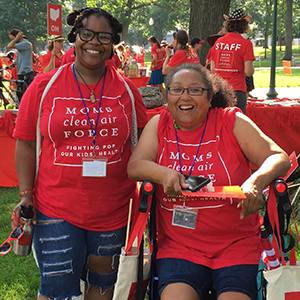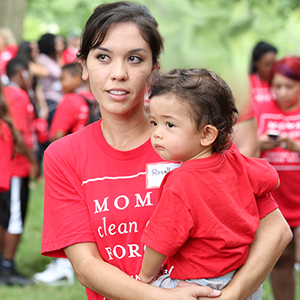
This was written by our DC Field Events Coordinator, Samantha Schmitz, and National Field Events Coordinator, Danielle Berkowitz-Sklar:
You’ve probably heard a lot in the news lately about gas stoves. It’s causing a lot of anxiety. We’re feeling that anxiety too. In fact, we’ve been thinking about it for a while.
Last month we tested the gas stoves in our apartments for nitrogen dioxide (NO2), a harmful chemical that can cause and worsen asthma. Danielle learned that her stove emits harmful levels of NO2—the highest levels the tester had seen, in fact—and has been reluctant to use her stove since.
We both live in small apartments that can trap indoor pollutants. Plus, because we are renters, we can’t just replace our major appliances. It is so frustrating that landlords and building owners are not aware of the pollutants and harm associated with gas stoves.
Many people across the country are in the same boat—unable to replace potentially dangerous appliances and worried about their health and the health of those they live with.
But there is no need to panic. There are things we can all do to protect ourselves from gas stove pollution—without the expense of replacing a working appliance.
First, join Moms Clean Air Force in calling on the Consumer Product Safety Commission to implement commonsense standards for these appliances. Range hoods should meet standards of performance. Methane leakage should be stopped with automatic shut-off valves. The public should have easy access to steps they can take to minimize the risk of these appliances.
Then, consider these ways to protect yourself and others in your home from pollution from your gas stove:
- If you have a vent hood, make sure it’s on when cooking on the gas stove or using the oven.
- If you don’t have a vent hood, open the windows while you’re cooking.
- Call the gas company or a service technician to ask them to check the connections on your stove for leaks and tighten them up.
- Use alternative appliances for cooking and heating food where possible, like electric kettles, portable induction cooktops, toaster ovens, air fryers, and microwave ovens.
- Check with your city and county government to find an indoor air quality professional to perform a ventilation audit for your home.
Whenever you are ready to replace your gas stove, consider electric or induction cooktops—and keep an eye out for new rebate programs for clean appliance alternatives made available thanks to the Inflation Reduction Act.
TELL THE CPSC: PROTECT OUR FAMILIES FROM GAS STOVE POLLUTION




